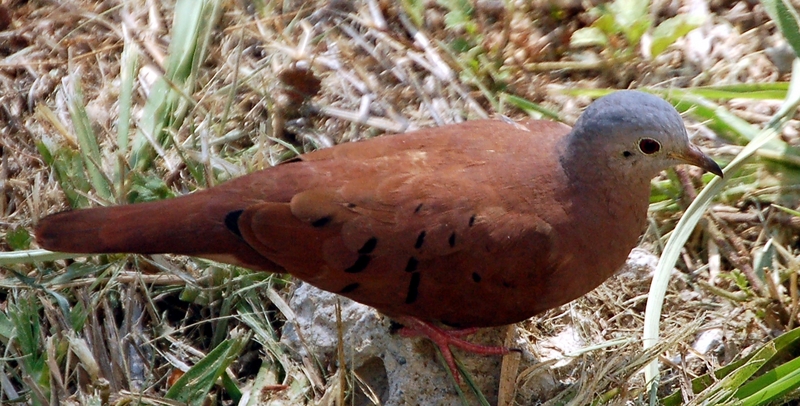Ruddy Ground Dove
From Wikipedia, the free encyclopedia
[Photo] Ruddy Ground Dove (Columbina talpacoti). Date 2007-02-04. Author Thomas Junier. Permission: The author released into the public domain.
The Ruddy Ground Dove, (Columbina talpacoti), is a small New World tropical dove. It is a resident breeder from Mexico south to Peru, Brazil and Paraguay, and on Trinidad and Tobago. Individual birds can sometimes be seen in southwestern USA, from southern Texas to southernmost California, primarily during the winter months.
The Ruddy Ground Dove is very common in scrub and other open country, including cultivation. It builds a solid cup-shaped stick nest in a tree and lays two white eggs. Incubation is 12???13 days with another 12???14 days to fledging. There may be a second or third brood.
Its flight is fast and direct, with the regular beats and an occasional sharp flick of the wings which are characteristic of pigeons in general.
Ruddy Ground Doves are small short-tailed pigeons, 17cm long with a weight normally about 47g . Adult males have a pale grey head and neck, and rich rufous upperparts, black-spotted on the wing coverts. The underparts are paler brown, the tail is edged black, and the underwings are cinnamon and black. The female is grey-brown rather than rufous, and has less contrast between head and body than the male.
The subspecies C. t. rufipennis of Central America, Colombia, Venezuela, Trinidad and Tobago shows much more cinnamon on the underwing than the nominate C. t. talpacoti.
Ruddy Ground Doves feed mainly on seeds. The call is a soft cooing cur-WOO.
This species can be quite approachable. Males frequently threaten each other, and brief fights may ensue.
http://en.wikipedia.org/wiki/Ruddy_Ground_Dove
| The text in this page is based on the copyrighted Wikipedia article shown in above URL. It is used under the GNU Free Documentation License. You may redistribute it, verbatim or modified, providing that you comply with the terms of the GFDL. |
|

